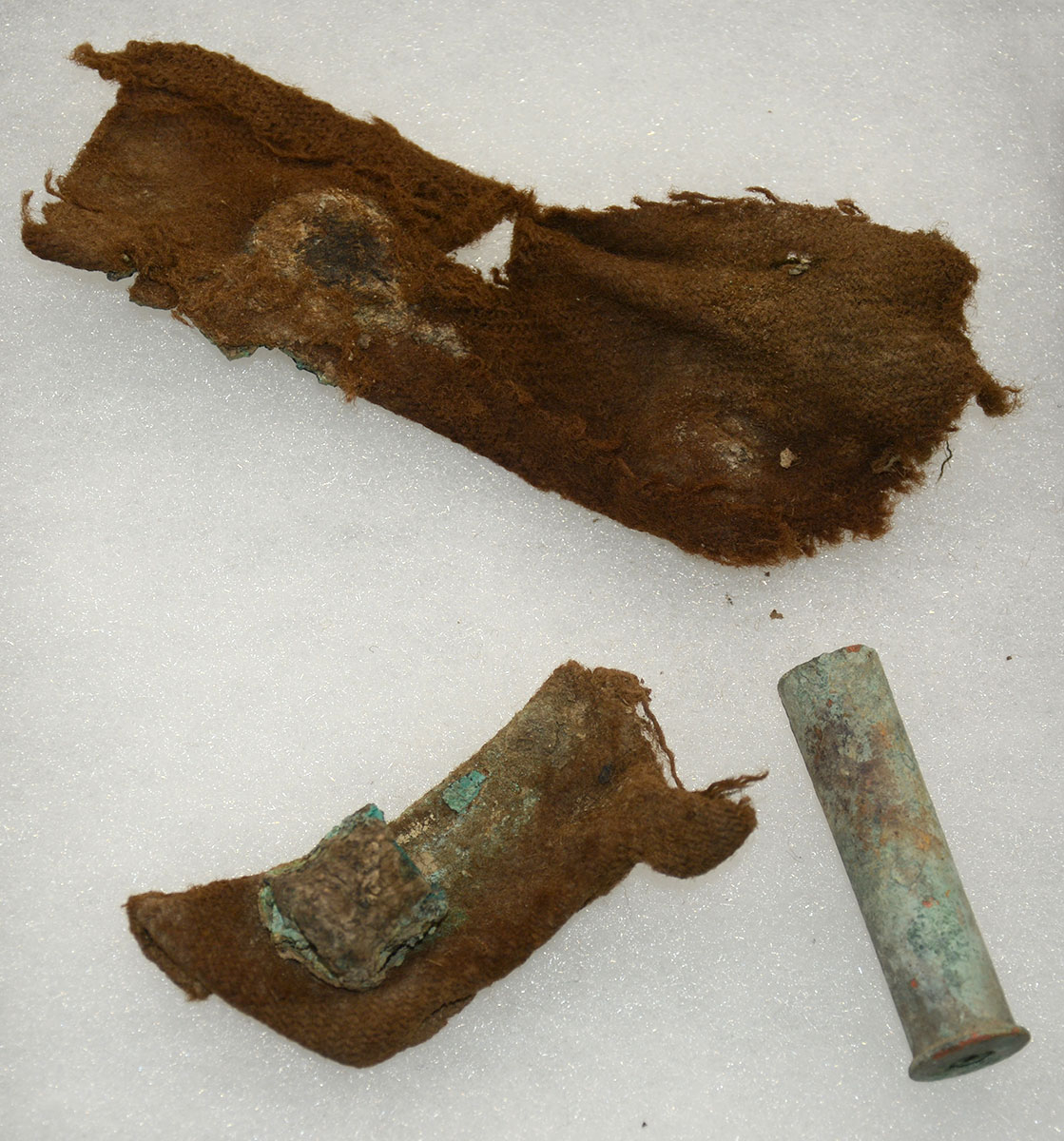site search
online catalog
.45-70 SHELL CASING AND CLOTH FRAGMENTS FROM AN INDIAN WAR FRONTIER FORT

Hover to zoom
$95.00 SOLD
Quantity Available: None
Item Code: 1052-632
These relics of army life on a small frontier post after the Civil War come from excavations at Fort Pembina, ND. These consist of two small pieces of cloth and the shell casing from a .45-70 cartridge used in the standard trapdoor rifles and carbines of the Indian Wars of the 1870s, 1880s, and into the 1890s. The cloth has shifted color from blue to light brown from the soil conditions, and show stains, including some green from the shell casing recovered with them.
Situated in the Red River Valley in North Dakota near the Canadian border, Fort Pembina was established in 1870 and in operation until 1895. Trading posts existed earlier in the area as part of the fur trade, and the first U.S. military post there was temporary- manned by a detachment of Minnesota troops in 1863-1864 following the 1862 Sioux uprising. In March 1870 a new fort was established south of the Pembina River and about 200 yards west of the Red River, completed by July and named in honor of Gen. George H. Thomas. The name was changed to Fort Pembina in September and the initial garrison consisted of two companies of the 20th US Infantry. Their main duty was to provide security for settlers worried about Sioux returning south from Canada, escort boundary surveys along the Canadian border, and, ironically, prevent raids north into Canada by Fenian groups.
The fort included enlistedmen’s barracks, officers’ quarters, guard house, ordnance storehouse, company kitchen, root house, laundress’s quarters, quarters for civilian employees, hospital and hospital servant’s house, a barn for the “hospital cow,” quartermaster and commissary offices and storehouse, stables, wagon shed, etc. The garrison reached peak strength in 1878 of 200, but the average was about 125 enlisted men and 8 officers. An October 1885 return listed 97 men, 2 field pieces, 1 mountain howitzer, 100 rifles, 19 pistols, 23 mules, and 9 wagons. By 1890 the post had just 23 men, and after an 1895 fire destroyed some 19 buildings it was decided to abandon the fort rather than rebuild, the last detachment left in September. The property was turned over to the Interior Department and later sold in 1902. [sr] [ph:L]
~~~~~~~~~~~~~~~~~~~~~~~~~~~~~~~~~~~
THIS ITEM, AS WITH ALL OTHER ITEMS AVAILABLE ON OUR WEB SITE,
MAY BE PURCHASED THROUGH OUR LAYAWAY PROGRAM.
CLICK HERE FOR OUR POLICIES AND TERMS.
THANK YOU!
Inquire About .45-70 SHELL CASING AND CLOTH FRAGMENTS FROM AN INDIAN WAR FRONTIER FORT
Most Popular
Historical Firearms Stolen From The National Civil War Museum In Harrisburg, Pa »
Theft From Gravesite Of Gen. John Reynolds »
Selection Of Unframed Prints By Don Troiani »
Fine Condition Brass Infantry Bugle Insignia »
Large English Bowie Knife With Sheath 1870’S – 1880’S »
Imported (Clauberg) Us Model 1860 Light Cavalry Officer's Saber »
featured item
IDENTIFIED FIELD-USED AND SOLDIER MODIFIED SCHUYLKILL ARSENAL MARKED HEAVY ARTILLERY ENLISTED FROCK COAT OF S.H. YAHRES, 5th PA HEAVY ARTILLERY
This Civil War Pattern 1858 uniform coat worn by a heavy artilleryman while serving as infantry has a great deal of character- good overall condition and color, but legitimate age in the darker tone of its brass buttons and slightly muted color of… (1268-543). Learn More »


